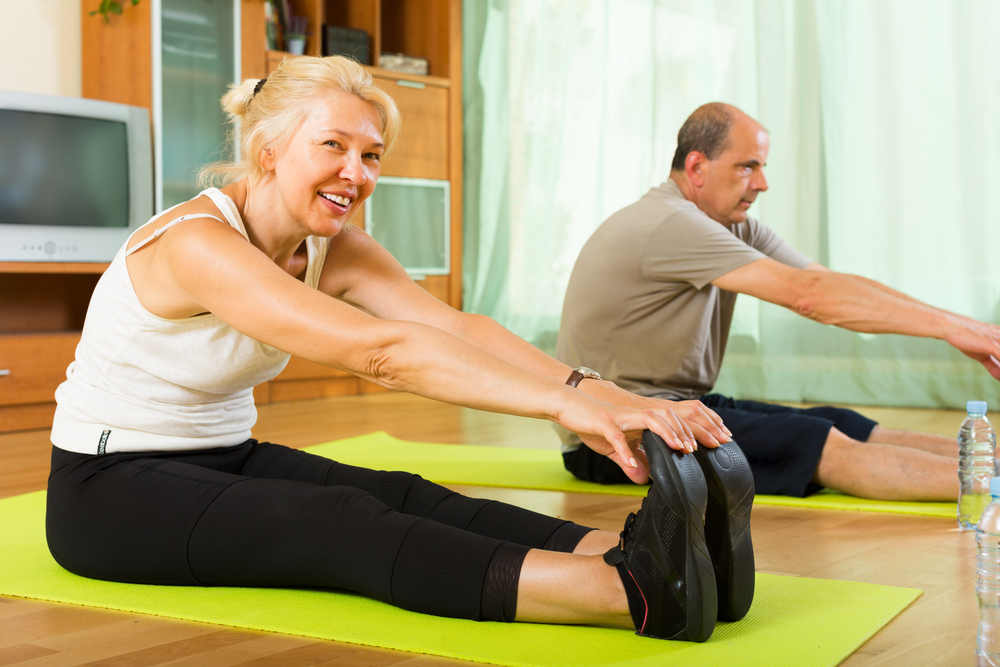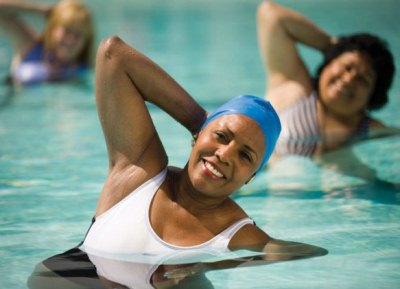Get 10% Off*, Use Code: RSHS25
Get 10% Off*, Use Code: RSHS25

Multiple Sclerosis (MS) is a disease that affects the central nervous system in which the body’s own immune system attacks the healthy myelin coating of nerves. It affects coordination, speech, and can cause paralysis and blindness. These symptoms can come and go, persist, or even worsen over time. Anyone can be affected by MS, from young children to the elderly and even professional athletes. Approximately 2.3 million people are affected by multiple sclerosis around the world. Implementing a low impact exercise routine can help those affected by MS manage the disease. You should always consult your physician before starting any exercise based rehab. In conjunction with a physical therapist, your doctor may design specific exercises based on each individual’s case and symptoms.
Regular exercise is a good idea for all of us, but for those dealing with MS there are some added benefits. In the past, doctors used to recommend avoiding exercise in order to avoid aggravating symptoms, but now evidence is showing that exercise can improve quality of life and even ease some symptoms. Being active and exercising can help with symptoms such as fatigue, coordination, weight loss (due to inactivity), even bladder control and overall heart health. Exercise even helps with stronger bones and since there have been studies that show those affected by MS may have a vitamin D deficiency, this can be extremely effective. A study at the University of Utah in 1996 was the first to demonstrate the benefits of exercise. Those participating in an aerobic exercise program had better cardiovascular fitness, less fatigue, improved strength, and even better bowel/bladder control. They had a more positive attitude and increased participation in social activities. While exercise can be an effective tool to fight the disease, care must be taken not to overdo it and possibly bring on a recurrence of symptoms. There should be a warm-up period and a cool down session after any moderate exercise.

The key to designing an exercise/rehab program for multiple sclerosis is understanding your own symptoms and triggers. Since MS affects different people different ways, your doctor can work with a physical therapist in order to custom design your exercise routine. We have all heard the “no pain, no gain” mantra, but that would not work for somebody suffering from multiple sclerosis. The exercise regimen that must be prescribed needs to be structured in a way that is low impact and target each patient specific needs. Activities that are perfect for MS patients are yoga, tai chi, and water aerobics. All of these allow a patient to exercise without over stressing their compromised central nervous system.
Yoga emphasizes relaxation, breathing, stretching, and deliberate movements. The most important thing to consider is finding the right class. There are different styles of yoga such as lynegard (holding poses) and others meant to use positions in sequence (Flow and Ashtanga). Some yoga styles are meant to be aerobic while others are more for stress meditation and relaxation. While there are differences in the types of yoga, there are many common benefits of each style. They emphasize alignment which benefits posture and balance and use breathing techniques and poses to focus on the body. They release tension and teach relaxation to minimize stress, all of which is beneficial to minimizing MS symptoms.
Tai Chi is a form of Chinese martial arts that is gentler than most forms of yoga. Deep breathing and slow, deliberate movements are at the core of this moving meditation and can even be done while sitting. These are done to promote balance and a heightened sense of body awareness. True to its Buddhist roots, Tai Chi relieves stress, improves balance, increase muscle tone, and develop a balance between mind and body. The benefits can include lowering blood pressure and improving cardiovascular health. Before beginning any class it’s a good idea to talk to the instructor about your condition first.

Water has unique properties that can benefit people with MS. These properties allow a sufferer to move in ways they may not be able to on land. Water offers buoyancy which supports weak limbs and allows for a greater range of motion and can promote muscle relaxation. The resistance of water (viscosity) can be used to increase muscle strength and work on skills such as coordination and balance which might be harder on land. The sensation of compression while in water can help with standing activities (such as walking) with less effort. Also, cooler water can help maintain a lower court temperature which is helpful for those with heat sensitivity issues.
While exercise may be beneficial to combating the symptoms of multiple sclerosis, there can be risks. Some patients are sensitive to heat and can overdo it which can lead to an outbreak of symptoms. Also, since fatigue is a large part of MS sufferers need to be cautious not to overtax their system. Once your doctor or physical therapist has designed your exercise program, you should always consult them before increasing any physical activity.
Disclaimer: All content found on our website, including images, videos, infographics and text were created solely for informational purposes. Our content should never be used for the purpose of diagnosis or treatment of any medical conditions. Content shared on our websites is not meant to be used as a substitute for advice from a certified medical professional. Reliance on the information provided on our website as a basis for patient treatment is solely at your own risk. We urge all our customers to always consult a physician or a certified medical professional before trying or using a new medical product.